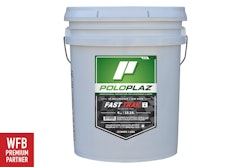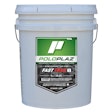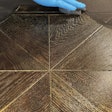The Problem
I was called to inspect 2,500 square feet of red oak strip flooring in a new home. The flooring contractor installed, sanded, stained and finished the floor with oil-modified polyurethane. The homeowner complained of several swirl marks throughout the entire floor, along with the stain appearing to be lighter around the edge of each room.
The Procedure
The sanding process was 40-, 60- and 100-grit, followed with a 100-grit hard-plate. A maroon pad had been used with the 100-grit paper on the edger to minimize edger marks. The floor was stained with a medium-brown oil-based stain. The contractor had made a special color blend by using one part stain and two parts mineral spirits. The finish was three coats of oil-modified polyurethane, and there was an overnight dry time between each coat.
The Cause
The complaint of lighter edges is known as "picture framing," and the swirls were buffer marks.
The first complaint, picture framing, occurred during the final edging process due to a difference in sanding technique between the edges and the field. Both were sanded using 100-grit paper, however, the maroon pad on the edger softened the cut, making the edger paper cut like a 120-grit.
That closed the grain, causing the edges to accept less stain than the field.
The second issue was the buffer marks. The flooring contractor explained that he hard-plated instead of screened to minimize the shellout of spring growth in the red oak flooring. The buffer marks in the floor were fine 100-grit scratches.
Using mineral spirits instead of neutral oil in the stain mixture changed the viscosity of the stain and contributed to the problem—even though there was less pigment in the mineral spirit mixture, it penetrated deeper into the sanding scratches and made them more visible.
How to Fix the Floor
When buffer marks appear while staining the floor, there is an old master's technique requiring some handwork that can be used to fix the problem: Using the leftover 100-grit edger paper, wet-sand these marks with the grain as you are applying the stain. All imperfections must be fixed before a sealer coat is applied.
The fix for this particular floor was a total resand. Was this due to bad sanding practices?
No, just bad judgment and a very costly mistake.
In the Future
Stain manufacturers blend their stain to comply with today's VOC laws. Years ago, flooring professionals added a variety of products from paint thinner to kerosene to thin out their stains.
Because of their special blends, today's stains don't allow us to do that. Depending on what you add to the stain, you even risk breaking the law.
When you need to thin today's stains to dilute the color, the typical solution recommended by stain manufacturers is to add neutral stain, using the same product line from the same manufacturer.
Any time you have special staining needs, check with a technical expert at the stain manufacturer before you experiment on the job site.
To avoid picture framing, contractors always need to consider the scratch pattern they are leaving on the floor. A difference in the scratch pattern between the edges and the field may not be visible with a natural finish, but it almost always shows up when the floor is stained. In this case, closing down the field or opening up the edges would have provided better results. Testing any stain technique first is safer and cheaper than a total resand.

































